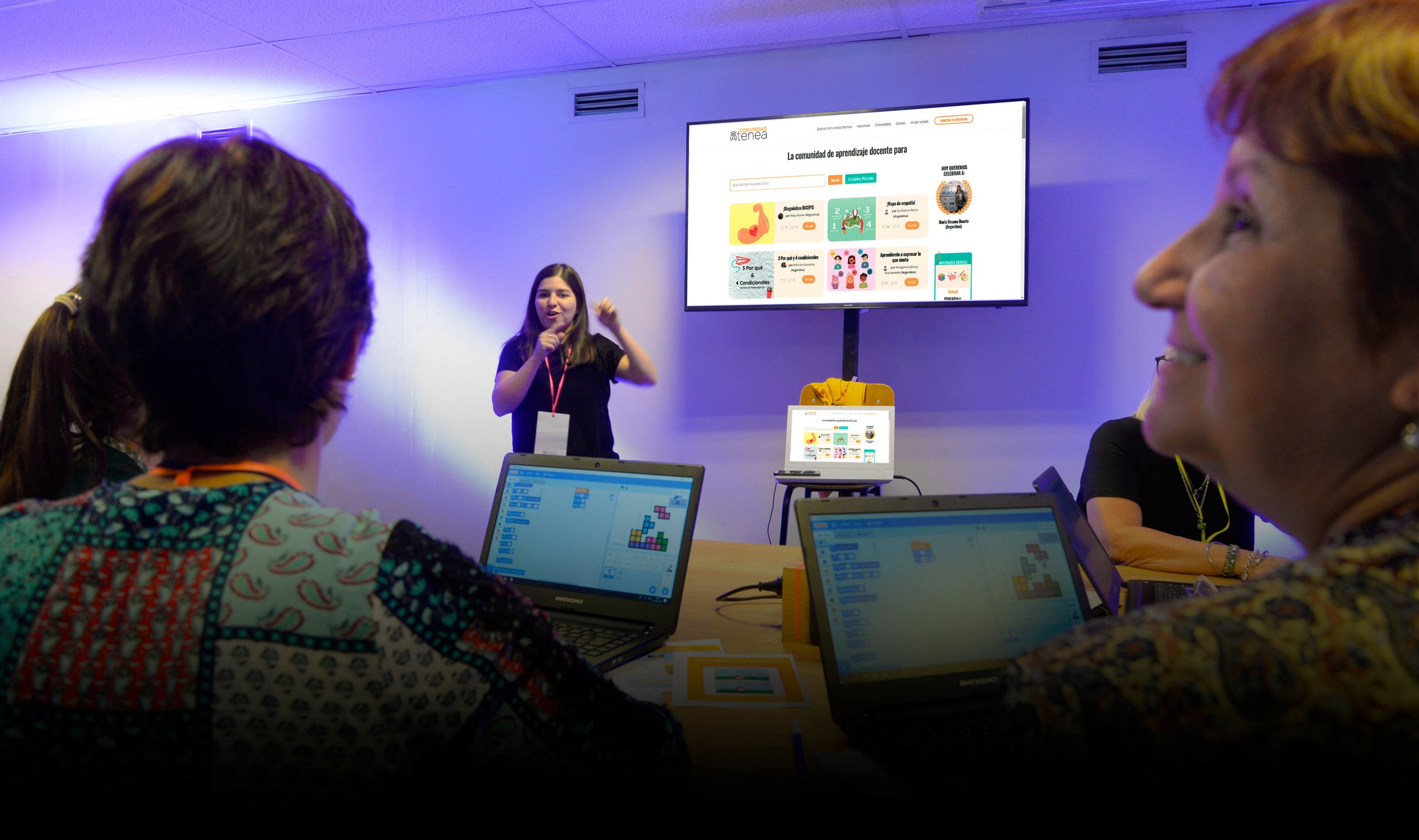Comunidad Atenea was selected by the Finnish HundrED and the World Bank as one of the ten innovations with the most significant impact on teacher development, promoting the development of twenty-first-century skills.
With information from Comunidad Atenea – Varkey Foundation
How can the professional development of teachers be improved worldwide?
To answer this question, HundrED, collaborating with the World Bank and supported by the Global Partnership for Education (GPE), launched The Teachers for a Changing World Spotlight, a global campaign to identify programs that effectively use technology to scale teachers’ professional development.
Comunidad Atenea, a collaborative learning community created by the Varkey Foundation for teachers throughout Latin America, was selected from more than 400 professional development programs in 80 countries. Following a rigorous selection process, applications were narrowed to ten programs that effectively use low- or high-tech solutions to attract, motivate, and support teachers.
Comunidad Atenea is an online collaborative learning space for teachers from across the region. This social network, already with more than 15,000 members, is where teachers meet, share best educational practices, get inspired by their peers, plan their classes, and connect with others.
Mariah O’mara of HundrED said, “We know that technology can be harnessed to improve access, participation, engagement, creation, and application of new skills in the classroom when used properly. As we emerge from the COVID pandemic, we need to invest in practical ways to continuously improve and support teacher professional development.”
Agustín Porres, Varkey Foundation Regional Director for LATAM, commented, “If we can inspire teachers, create a community, and take them on a digital journey, we will discover the potential of technology in education and guarantee an equitable, quality education for all.”
Five key points from the 10 selected innovations
-
Design with the user in mind: If you want to ensure that your users integrate your solution into their daily practice, you must understand their needs, context, level of connectivity, and their digital knowledge.
-
Use existing technology whenever possible: If teachers already use mobile phones in their classrooms, think about how your solution might use that existing technology before investing in any new and expensive complements.
-
Offer users options to access content: Try to incorporate many different ways for teachers to access content through high- and low-tech means.
-
Train users how to use the technology: Technology can only improve learning outcomes if teachers are trained to use it.
-
Make sure the technology facilitates teachers’ professional development, but don’t direct it: Think first about the results you hope to achieve and how technology can help you attain them more effectively.
Learn about the other nine programs that were selected
-
Inspiring Teachers: Peer Coaching Platform (United Kingdom)
-
LeadNow! (Kenya)
-
OneSky for all Children (China)
-
PerformEd (Egypt)
-
ProFuturo Digital Education (Spain)
-
Puentes Educativos (Chile)
-
Teach2030 (United Kingdom)
-
Tu clase, tu país (Your class, your country) (Chile)
-
Global School Leaders (India)
Translation by Daniel Wetta
This article from Observatory of the Institute for the Future of Education may be shared under the terms of the license CC BY-NC-SA 4.0 
)
)


)